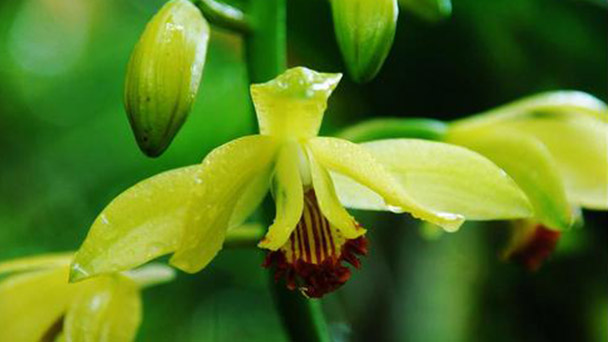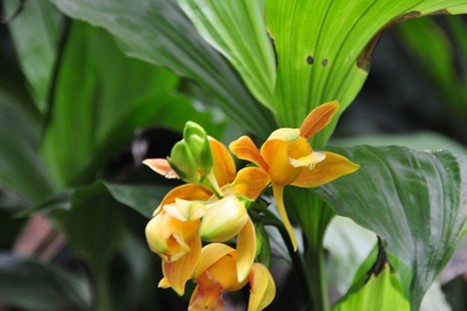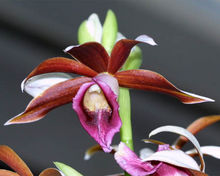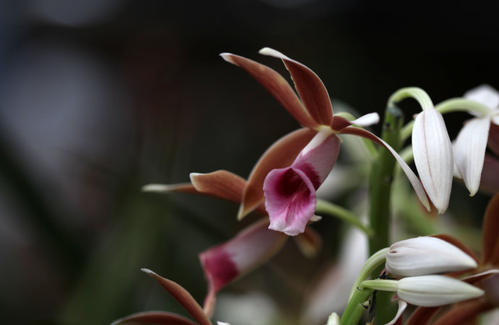The breeding methods and precautions of Phaius flavus
Written by Maggie
Nov 21 2020

In the process of breeding Phaius flavus, generally we can choose a mixture of soil humus soil, river sand, also can use broken moss, peat soil and river sand in accordance with the ratio of 3:1:1 made from mixing. In spring, summer, autumn, it needs a half overcast environment, or about 50% shading, In summer, in addition to keep the soil moist, we also need to water moisturize the surrounding regularly.
Phaius Flavus picture

Cultivation method of Phaius Flavus
1. Matrix requirements
The soil quality of potted phaius flavus should ensure good air permeability and good drainage performance. Generally, the mixed soil of humus and river sand can be selected, or crushed moss, peat and river sand can be mixed and prepared in a ratio of 3:1:1. During spring germination, the basin can be changed, and some coarse shaili can be filled at the bottom for ventilation.
2. Light and temperature environment
Photoperiod environment is one of the breeding methods and precautions of Phaius Flavus. In spring, summer and autumn, we need to put it in a semi-overcast environment, or about 50% shading. In winter, we can avoid shading and generally put it beside the window facing the sun.
3. Water properly
Phaius Flavus has a high requirement for environmental humidity. In addition to keeping the basin moist in summer, it is also necessary to constantly spray water around to moisturize, which should be carried out in the form of spray or atomization to improve the environmental humidity. It is best to keep it at 70% ~ 80%.

4. Fertilization requirements
During spring germination after Phaius Flavus dormancy, thin cake fertilizer solution was applied 2 ~ 3 times per month. During vigorous growth, liquid fertilizer could be applied every 2 ~ 3 weeks. Thick fertilizer should not be applied by all means.
Notes for cultivation of Phaius Flavus
Generally, sheath rust diseases occur on the lower surface of the leaves. So during the growth of Phaius Flavus, the growth of leaves should be observed frequently. Once the yellow leaves are discovered, it is necessary to cut them off in a timely manner, and then spray them with an appropriate amount of zinc powder. It is best to thoroughly disinfect the basin and soil once a year to prevent the breeding of bacteria.

Latest Updated
- Benefits of Bugleweed - 7 Science-backed Health Benefits
- Bugleweed Dangers & Side Effects - Is It Poisonous?
- How to Plant Evergreen Trees - What You Should Know
- When to Plant Evergreens - Grow Guide for Evergreen Trees
- 12 Wonderful Evergreen Shrubs for Your Garden
- 12 Popular Evergreen Plants with Pictures for Beginners
- When And How To Prune A Lilac Bush Like a Pro
- How to Grow & Care for Lilac Vine (Hardenbergia Violacea)
- Japanese Lilac Tree (Syringa Reticulata) Care & Propagation Guide
- Shumard Oak Pros and Cons - What to Know
Popular Articles
- Winter maintenance of Antirrhinum Majus
- How to Grow Terminalia Mantaly Tree
- How to Grow and Care for Crossostephium Chinense
- How to grow Antirrhinum Majus in spring
- Peristeria Elata (Dove Orchid) Profile: Info & Care Guide
- Underwatered Snake Plant (Sansevieria Trifasciata) - Signs And How To Fix
- How to Care for Brazilian Jasmine Plant (Mandevilla Sanderi)
- How to Grow & Care for Graptopetalum Purple Delight in Summer
- Rosa Chinensis (China Rose): Plant Growing & Care Tips
- How to Care for Baby Sun Rose (Aptenia Cordifolia)